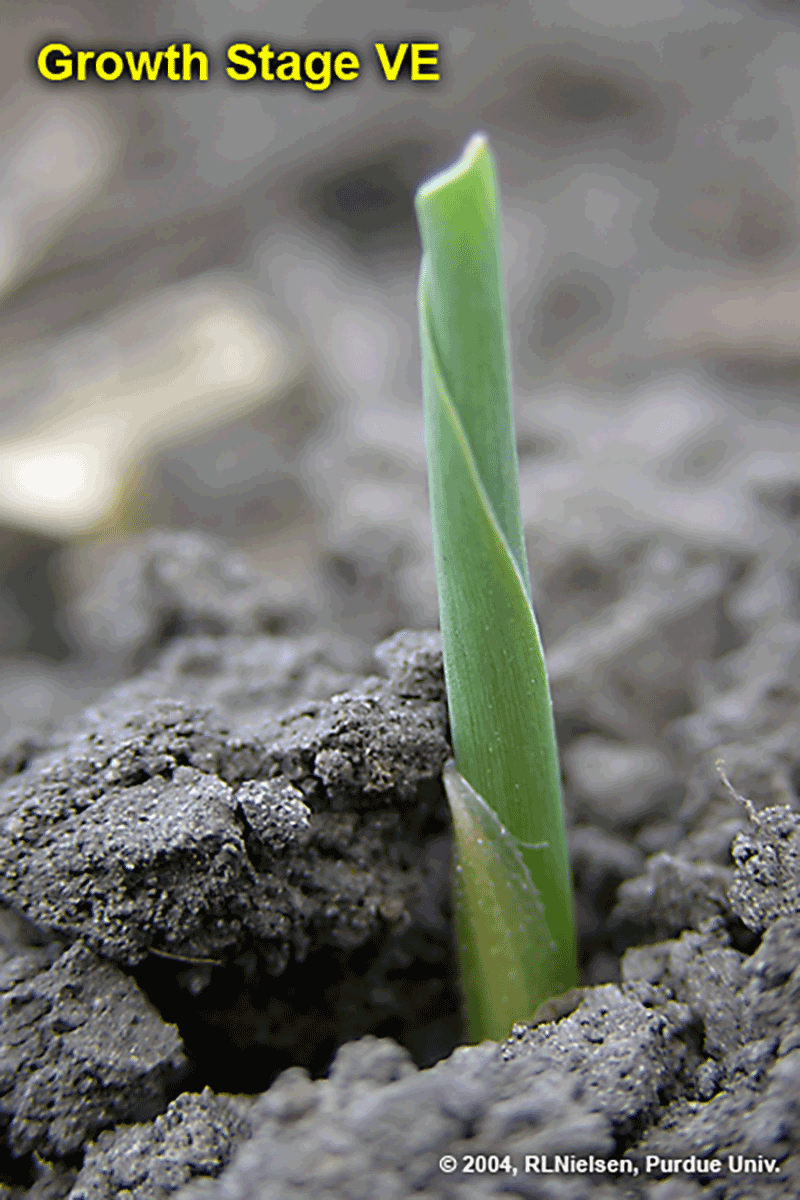picture of the week
April 27, 2020
Corn Germination
R.L. (Bob) Nielsen, Extension agronomist, Purdue University
Germination is the renewal of enzymatic activity that results in cell
division and elongation and, ultimately, embryo emergence through the seed
coat. Germination is triggered by absorption of water (imbibition) through
the seed coat. Uneven seed-to-soil contact can interfere with imbibition and
result in uneven germination.
The visual indicators of germination occur in a distinct sequence. The
radicle root emerges first, near the tip end of the kernel, within two to
three days in warm soils with adequate moisture. In cooler or drier soils,
the radicle root may not emerge until one to two weeks after planting.
The coleoptile (commonly called the “spike”) emerges next from the embryo
side of the kernel within one to many days of the appearance of the radicle,
depending on soil temperature. The coleoptile initially negotiates its way
toward the dent end of the kernel by virtue of the elongation of the
mesocotyl. The coleoptile is a rigid piece of plant tissue that completely
encloses the four to five embryonic leaves (plumule) that formed during
grain development of the seed production year. The plumule leaves slowly
enlarge and eventually cause the coleoptile to split open as it nears the
soil surface.
The lateral seminal roots emerge last, near the dent end of the kernel. Even
though these and the radicle root are technically nodal roots, they do not
comprise what is typically referred to as the permanent nodal root system.
The first set of so-called “permanent” roots begins elongating at
approximately the V1 leaf stage (1 leaf with visible leaf collar) and is
clearly visible by V2.
For more information on germination and emergence, browse these on-line
articles...
http://www.kingcorn.org/news/timeless/GerminationEvents.html
http://www.kingcorn.org/news/timeless/Emergence.html
http://www.kingcorn.org/news/timeless/GermEmergReq.html
Click image to enlarge




